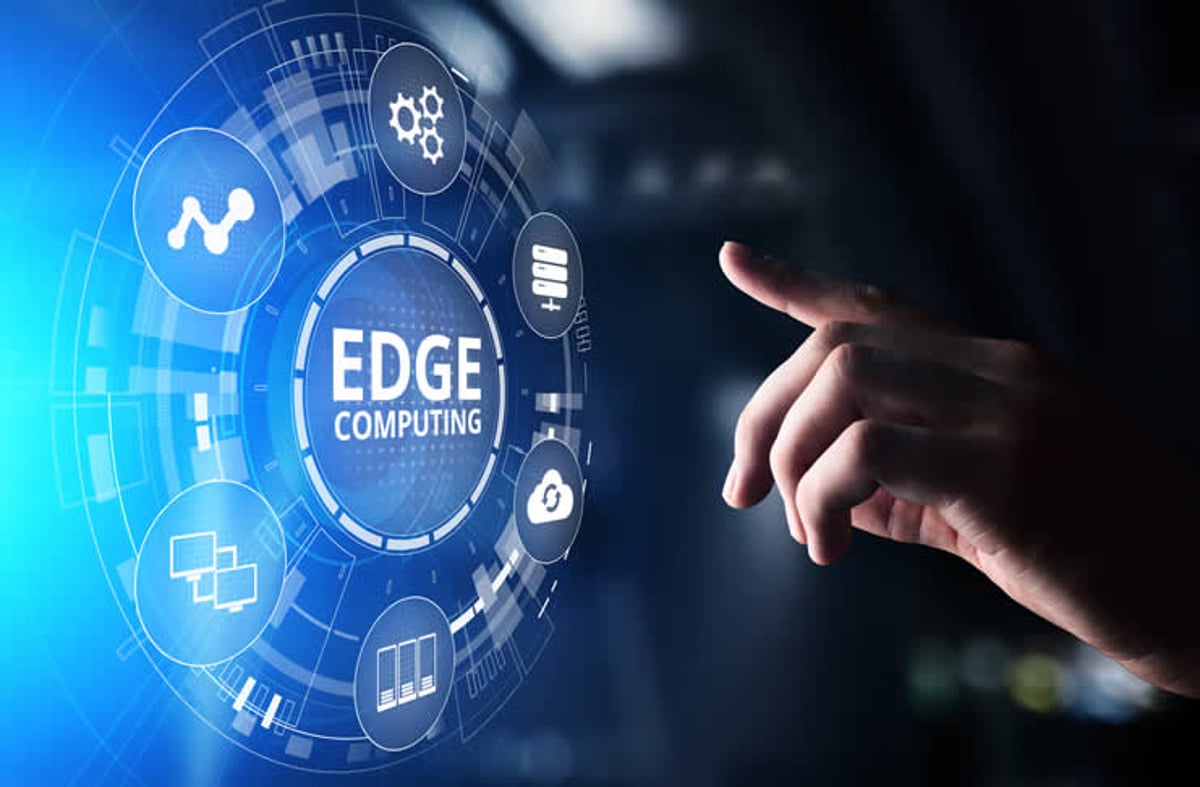
What is edge computing? Edge computing is a method of processing data closer to where it’s generated, rather than relying solely on centralized data centers. This approach reduces latency, enhances speed, and improves efficiency. Imagine a smart thermostat that adjusts your home’s temperature in real-time. Instead of sending data to a distant server, it processes information locally, providing instant results. Why is edge computing important? It’s crucial for applications requiring real-time responses, like autonomous vehicles, smart cities, and IoT devices. By minimizing data travel, edge computing ensures faster decision-making and better performance. Ready to dive into the world of edge computing? Let’s explore 33 fascinating facts that highlight its significance and potential!
What is Edge Computing?
Edge computing is a technology that brings data processing closer to the source of data generation. This reduces latency and improves efficiency. Let's dive into some fascinating facts about edge computing.
-
Origin: The concept of edge computing emerged in the late 1990s to address the limitations of cloud computing.
-
Latency Reduction: By processing data locally, edge computing significantly reduces latency, making applications faster.
-
IoT Integration: Edge computing is crucial for the Internet of Things (IoT) as it allows devices to process data in real-time.
-
Bandwidth Efficiency: It reduces the amount of data sent to centralized data centers, saving bandwidth.
-
Data Privacy: Local data processing enhances privacy by keeping sensitive information closer to its source.
Benefits of Edge Computing
Edge computing offers numerous advantages that make it a game-changer in various industries. Here are some key benefits:
-
Real-Time Processing: Enables real-time data analysis, which is essential for applications like autonomous vehicles and smart cities.
-
Cost Savings: Reduces costs associated with data transmission and cloud storage.
-
Scalability: Easily scalable to accommodate growing data needs without overloading central servers.
-
Reliability: Increases system reliability by reducing dependency on a single point of failure.
-
Energy Efficiency: Consumes less energy compared to traditional cloud computing, making it more sustainable.
Applications of Edge Computing
Edge computing is transforming various sectors by enabling innovative applications. Let's explore some of these applications:
-
Healthcare: Facilitates remote patient monitoring and real-time health data analysis.
-
Manufacturing: Enhances predictive maintenance and quality control in factories.
-
Retail: Improves customer experience through personalized services and inventory management.
-
Telecommunications: Supports 5G networks by reducing latency and improving data processing.
-
Agriculture: Enables precision farming with real-time data on soil conditions and crop health.
Challenges in Edge Computing
Despite its benefits, edge computing faces several challenges that need to be addressed. Here are some of the main challenges:
-
Security: Ensuring data security at the edge is more complex due to the distributed nature of the network.
-
Interoperability: Integrating different devices and systems can be challenging.
-
Management: Managing a large number of edge devices requires robust infrastructure and tools.
-
Standardization: Lack of industry standards can hinder the adoption of edge computing.
-
Cost: Initial setup costs can be high, especially for small businesses.
Future of Edge Computing
The future of edge computing looks promising with advancements in technology and increasing adoption. Here are some trends to watch out for:
-
AI Integration: Combining edge computing with artificial intelligence for smarter data processing.
-
5G Networks: The rollout of 5G will boost edge computing capabilities.
-
Edge Cloud: Hybrid models combining edge and cloud computing for optimal performance.
-
Edge Analytics: Advanced analytics at the edge for real-time insights.
-
Decentralized Applications: More decentralized applications leveraging edge computing.
Companies Leading in Edge Computing
Several companies are at the forefront of edge computing innovation. Here are some of the key players:
-
Amazon Web Services (AWS): Offers edge computing solutions through AWS IoT Greengrass.
-
Microsoft: Provides Azure IoT Edge for building edge computing applications.
-
Google: Google Cloud IoT Edge enables edge computing for IoT devices.
-
IBM: IBM Edge Application Manager helps manage edge applications.
-
Cisco: Cisco's edge computing solutions focus on network efficiency and security.
Real-World Examples of Edge Computing
Edge computing is already making a difference in the real world. Here are some examples:
-
Smart Cities: Cities like Barcelona use edge computing for traffic management and public safety.
-
Autonomous Vehicles: Companies like Tesla use edge computing for real-time data processing in self-driving cars.
-
Smart Homes: Devices like Amazon Echo and Google Nest use edge computing for faster response times.
The Future of Edge Computing
Edge computing is transforming how data is processed and managed. By bringing computation closer to data sources, it reduces latency, enhances security, and improves efficiency. This technology is paving the way for innovations in various fields like healthcare, manufacturing, and smart cities. With the rise of IoT devices, edge computing's importance will only grow. Companies investing in this technology can expect faster data processing, better user experiences, and more robust security measures. As edge computing continues to evolve, staying informed about its developments will be crucial. Embracing this technology now can give businesses a competitive edge, ensuring they remain at the forefront of technological advancements. So, keep an eye on edge computing trends and be ready to adapt. The future is bright for those who harness its potential.
Was this page helpful?
Our commitment to delivering trustworthy and engaging content is at the heart of what we do. Each fact on our site is contributed by real users like you, bringing a wealth of diverse insights and information. To ensure the highest standards of accuracy and reliability, our dedicated editors meticulously review each submission. This process guarantees that the facts we share are not only fascinating but also credible. Trust in our commitment to quality and authenticity as you explore and learn with us.


